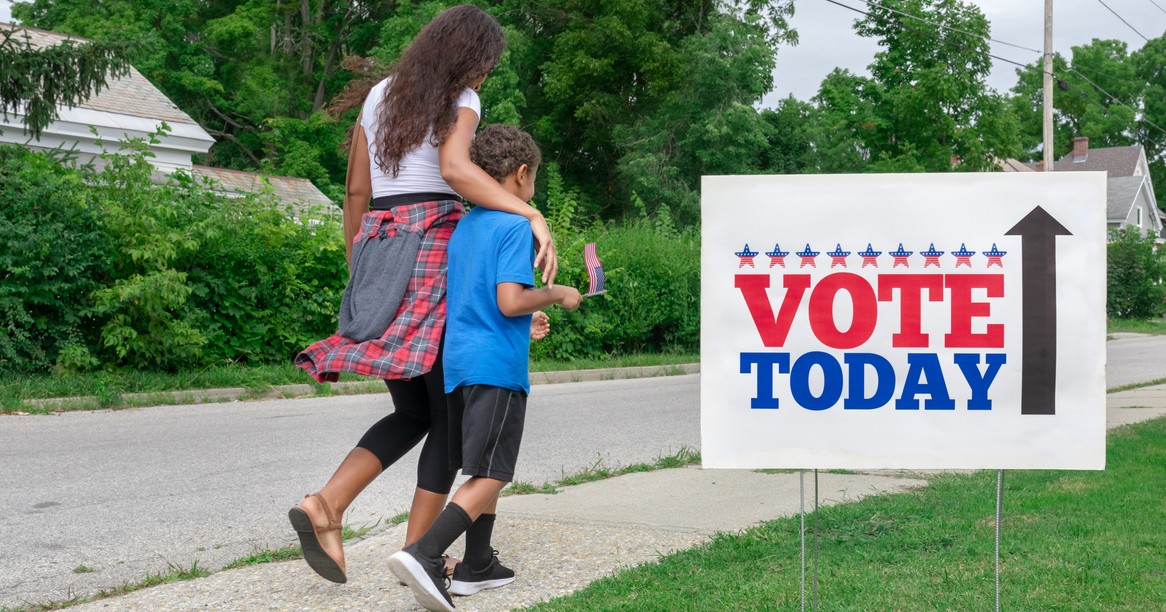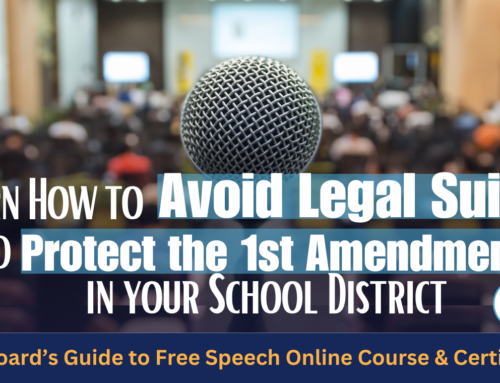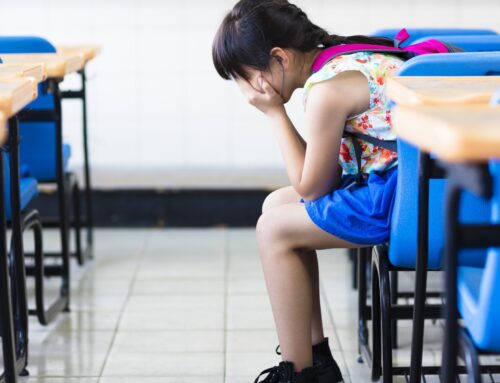
Few can deny that our children are the future, and the current and vehement culture war in the schools plainly tells this tale. Education is a foundational component to a child’s success in life, but it is also vital to how they approach their civic responsibilities, including voting.
It’s hard to overemphasize the importance of children understanding good citizenship. For the American way of life to flourish, the average American must realize who they really are: the gatekeepers of our society. Children are gatekeepers in training.
Each child must be shown—through education and by example—what responsible citizens do and how to be involved. Being involved includes the voting booth, and many Americans take this step very seriously. However, voter turnout has been on a downward trend for decades, and by international comparison, the U.S. has trailed behind other first-world countries for a while.
“Voter turnout in the United States, in general, is low—and because of that, local elections tend to suffer most,” Refinery29 notes. “In the 2016 presidential election, about 56% of the voting-age population cast a ballot…. Nationwide, only 27% of eligible voters participated in local elections…. Studies show that voter turnout for local elections is higher if they coincide with a larger election cycle, known as on-cycle elections. Two times higher on average, in fact.”
It’s worth noting, however, that the 2018 midterm elections saw a spike in young voter turnout, resulting in a record number of young Americans voicing their values in the ballot box.
This November marks the next midterm elections and offers a perfect opportunity to teach your student about the election process, the characteristics of a good candidate, and their civic responsibility as a good citizen!
A Brief Civics History
A core purpose of education was once teaching students how to be responsible and involved citizens. The National Education Association explains, “One of the primary reasons our nation’s founders envisioned a vast public education system was to prepare youth to be active participants in our system of self-government. The responsibilities of each citizen were assumed to go far beyond casting a vote; protecting the common good would require developing students’ critical thinking and debate skills, along with strong civic virtues. Blind devotion to the state or its leaders would never be enough. Rather, being American was something to be learned and carried out.”
Civic duties encompass a wide range of active roles and responsible living within our Republic, and education once provided students with the tools to embrace this way of life. Civics class was a staple, and history was a must. High school students completed three civics and government classes before they were considered eligible for graduation. They left high school with a basic understanding of how our political system functioned.
In the 1960s, things began to change. The curriculum shifted its focus, and civics classes were among the classes cut. The No Child Left Behind Act continued this trend, and “core subjects” and rigorous standardized testing narrowed schools’ focus to other areas.
Fun Fact: Did you know that before 1971, the national legal age to be an eligible voter was 21?
Young people have been involved in politics for generations, even without the right to vote themselves. From war protests to their own suffrage movement, young Americans have had a valid position in the political and civic realm.
However, to actively participate, they must have the education, information, and practical application skills necessary to shoulder their responsibilities effectively.
Educating Our Kids
So, how can we educate our children on the voting process? How do we prepare them for their time at the ballot box?
Check out these tips for successfully guiding your student on this important journey!
Explain the Process
Kids are…well, kids! Unless they’re unusually observant and curious, they probably don’t know anything at all about the voting process. You should start at the beginning when explaining it to your child.
- Obtain a sample ballot or perhaps a candidate catches your eye
- Research the candidate to discover if they align with your values
- Research the issues
- Create a “cheat sheet” for yourself to help you remember how you’re voting on the issues and which candidates you’re choosing to support
- Go to your local voting poll on election day
- Show the necessary identification
- Take your ballot and cheat sheet to the booth
- Mark your choices
- Discard your ballot through the provided method
- Walk out of the poll
- Polls close at their designated time
- Votes are counted
- Winners are announced
Overall, the process is pretty simple! The most challenging part is the research beforehand. A great way to introduce your kid is by allowing them to accompany you to the poll. Familiarize them with the process and the atmosphere and remove the fear of the unknown.
Project: Show your kid how it works! Choose a variety of items (maybe candies or snack items). Gather all the members of your household and “campaign” for each item. Hand out a list of the “issues” (maybe calories, overall healthiness, taste profile, popularity, and parent company policies). Have each family member take a day or two to research the “candidates.” On “election day,” have everyone cast their vote. The winning item wins the right to be the dessert that night!
Get Them Involved
My parents and grandparents had me involved in political campaigns from a very young age. When I was seven, my entire extended family worked on a local campaign. My siblings, cousins, and I had the tasks of putting postage stamps on hundreds of envelopes, carrying stacks of mailings, and serving as designated riders in the car as our parents rigorously drove around town for our candidate. My first memory of a presidential election was at our local candidate’s election party. It was in a barn, with loud music, snacks a seven-year-old wasn’t really into (I mean…how hard would it have been to offer some juicy juices, am I right?), and a large TV mounted on the wall as we waited to find out if Bob Dole or Bill Clinton would take the presidency.
As tired, bored, cranky, and overwhelmed as I was at the time, this experience jumpstarted my interest in elections and politics.
By the time I was eleven or twelve, I was walking in parades for local candidates, handing out fliers at local festivals, calling my senators, and writing letters to the editor. My teen years were littered with political exploration and education. When I turned eighteen and could legally vote, I was devastated that it wasn’t an election year. But, at nineteen, I practically ran to the ballot box, sample ballot “cheat sheet” in hand, ready to cast my first ballot.
The moral of this story? Get your kids involved! You don’t have to jump into a local campaign if that’s not your style. Attend a candidate’s rally, bring your student to a meet and greet, or encourage your kid to write a letter to an editor on a political topic they feel strongly about.
Part of voting responsibly is understanding the issues and being able to articulate your position. Voting goes beyond the ballot box, and an involved citizen will engage the culture around them on critical issues. The ballot box is the final battle. The war is won before election day.
Project: Have your child research a local, state, or national issue. Once they understand the concept thoroughly, discuss what approach would be the best solution according to their values. Then, have your student contact the appropriate official and let that official know how they feel on the topic and why. This can be by letter, email, or phone call. They can contact the county commissioner or school board at the local level. At the state level, they should contact your district’s legislator or the governor. At the federal level, contact your congressmen/women.
Explain the Electoral College
It seems like after every presidential election, we hear the good, the bad, and the ugly about the electoral college. Unfortunately, many Americans don’t actually understand how the electoral college works or the benefits of the checks and balances that it provides.
Educate your student on this crucial piece of America’s election puzzle. If you’re unsure how it works, this is a great time for you and your student to learn together! There are many resources online offering all of the information you need. Ducksters offers a fun, kid-friendly explanation of how the electoral college works.
Project: Together, research which recent elections were strongly influenced by the electoral college and why they mattered.
Make Politics Part of Everyday Life
The best way to offer your kids a comprehensive political education is to have well-reasoned, decisive, diplomatic discussions of the issues, government officials, and candidates. Kids pick up a lot in their everyday life, and conversations like these are incredibly effective.
“You absolutely can tell your kids who you’re voting for and why.” Kinder Care suggests, “Talk about the things that are important to you and your family in this election—after all, many of the decisions we’re making today, from environmental protection to affordable education and job creation, will impact your kids as they grow.”
Encourage their input, questions, and even respectful debate. Show them how to articulate their position diplomatically. Teach them critical thinking skills so they can do the research themselves and draw independent conclusions.
Discuss what citizenship means, and research countries that don’t have free elections for their citizens.
Project: Together, research what it takes to immigrate to America and obtain citizenship. Discuss how the process could be improved or streamlined and talk about how each of you thinks the process could do a better job protecting the safety and security of Americans.
American Birthrights
Kids Count notes, “When young people play an active role in elections or other policy change efforts, they develop skills and knowledge, and they become empowered to help shape their futures, strengthen their communities and contribute to democracy…Civic engagement creates valuable leadership skills, which can help youth and young adults thrive throughout their lives.”
Civic involvement and responsible voting are key components of American citizenship. Parents are primarily responsible for preparing their children to pick up the mantle and become involved citizens. Involved kids make engaged citizens — thus, everyone benefits when children receive a solid civic education.





Hello. Thank you for always good blog강남퍼블릭